Questions and answers on planting and transplanting techniques for landscape trees (arbor)
There is a saying in the industry: "There is no time to plant trees, as long as the trees are unknown", as long as the transplanting procedures are followed correctly and attention is paid to maintenance and management, transplanting work can be carried out all year round. However, many gardening practitioners found that after transplanting trees, although they followed the standard transplanting practices, the growth was still poor. Today, the editor and the majority of colleagues discussed the tree transplanting survival technology in garden projects, maximizing the survival rate and transplanting quality, and avoiding the waste of resources and manpower and material resources caused by tree death. This is an important issue faced by the majority of gardening technology workers.
1. If the distance between trees is too small or too close to buildings, the crown will be skewed and some trees will die due to self-thinning. The growth rate of trees will be slowed down, their health will be damaged, and they will be prone to diseases and insect pests. Therefore, the distance between trees should be kept at more than 5 meters.
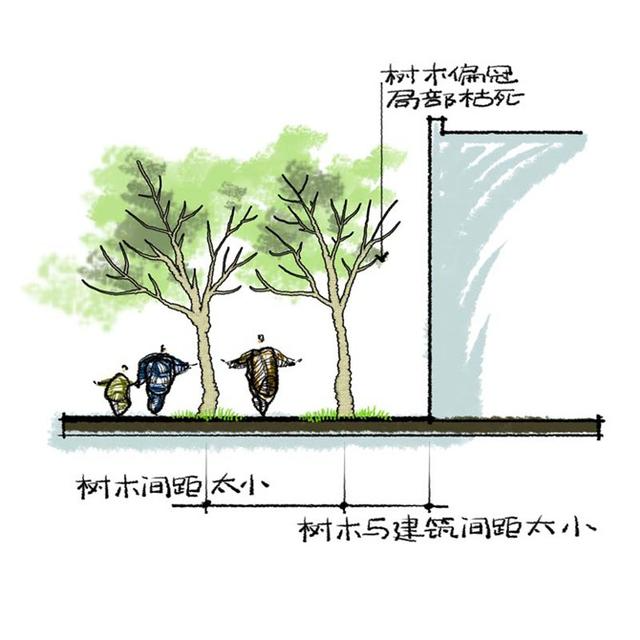
2. Schematic diagram of the underground structure of trees. [See the figure below]
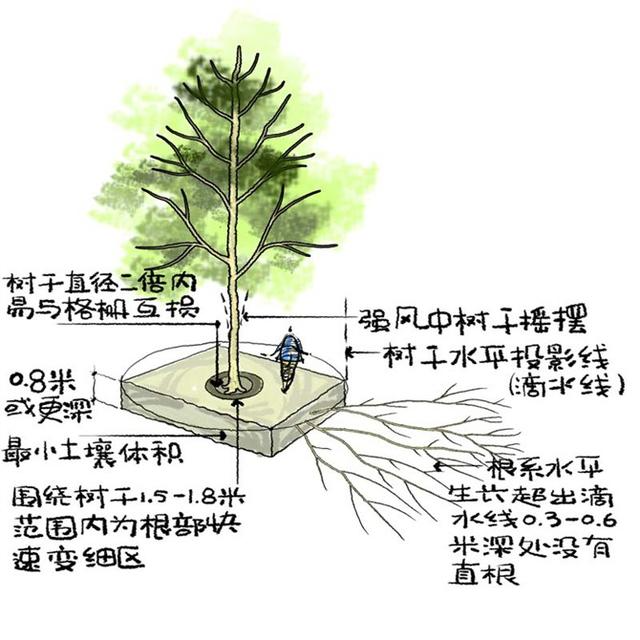
3. Iron grates have no benefit to tree growth.
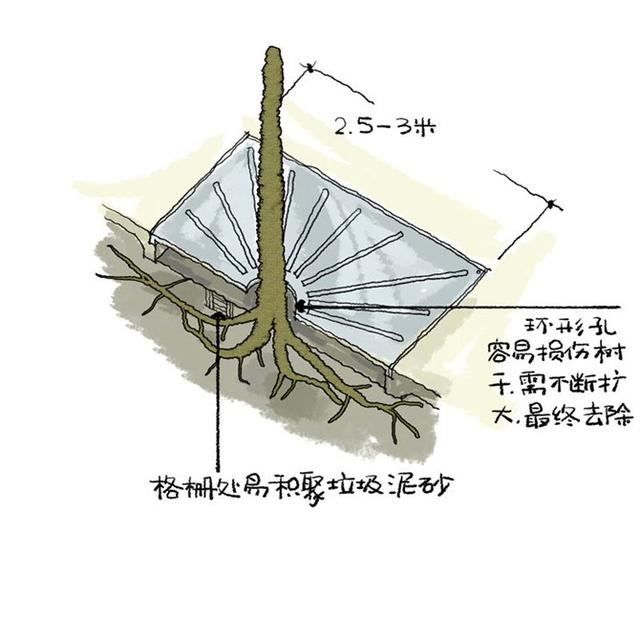
4. Although the grille decorates the surrounding area of the tree trunk, it has no benefit to the growth of the tree. Try not to use it. You can use various soft paving or ground cover instead.
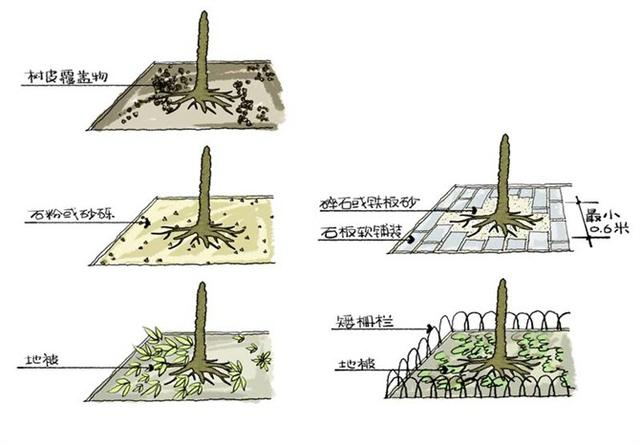
5. The water-permeable and breathable soil surface around the tree trunk should be as large as possible.
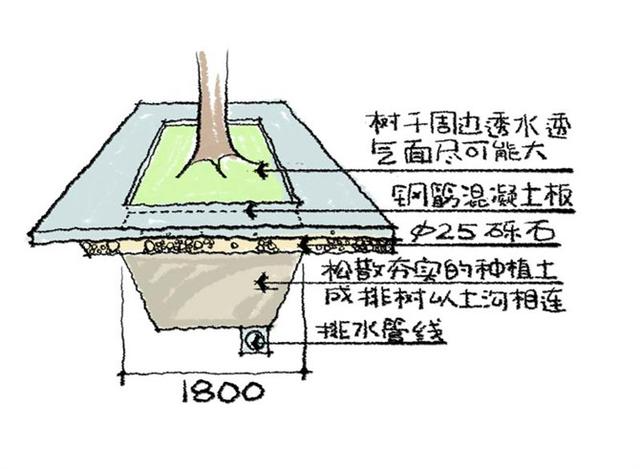
6. Connecting the parts where trees are connected with planting soil can improve the growth vitality of trees.
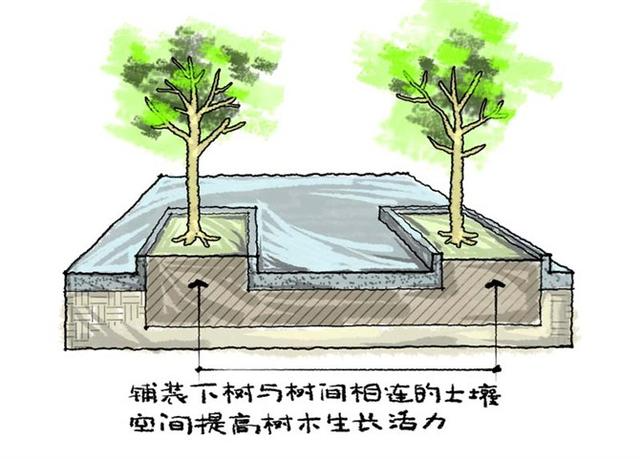
7. Support the concrete slab above and establish root growth channels in all directions.

8. Plant smaller tree seedlings on the lawn to avoid competition between the lawn and the tree seedlings.
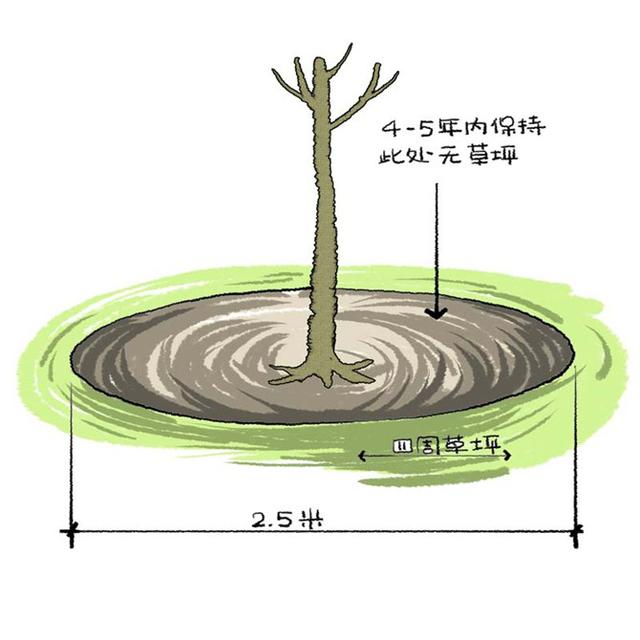
9. The relationship between the volume ratio of sand mixed in the soil and the porosity.
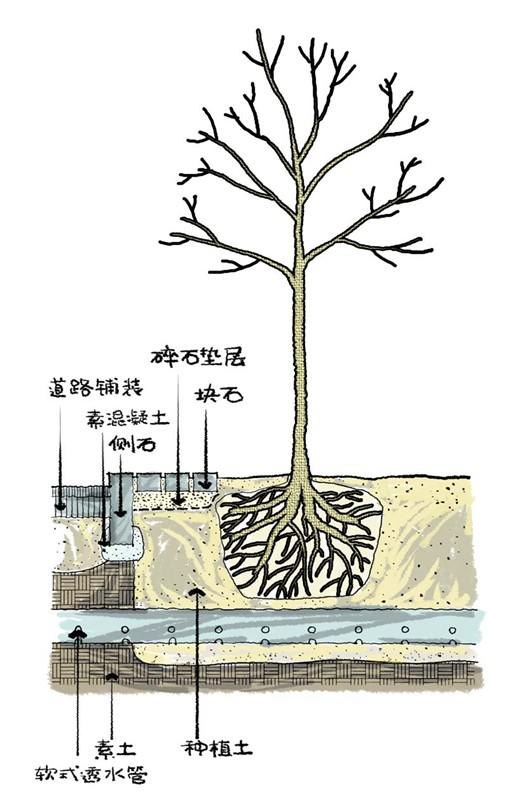
10. Place a drainage pipe under the soil ball of the tree.
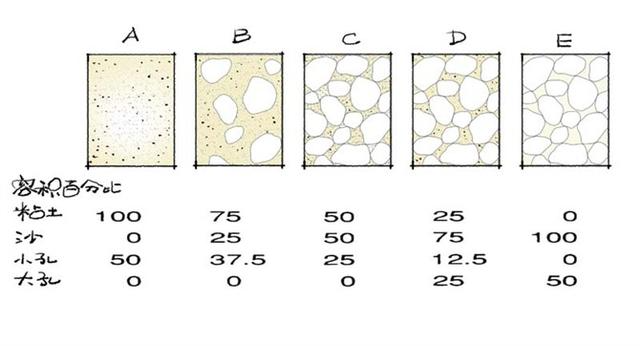
11. On one side of the tree hole, dig the soil to form a drainage ditch.
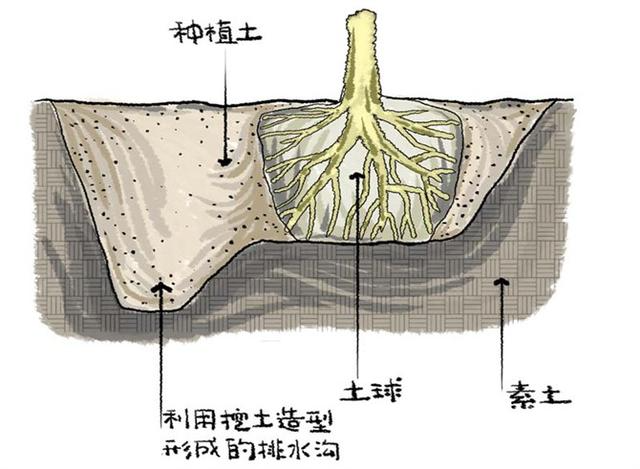
1. The greening of roads, squares, and buildings in the city center has destroyed the soil needed for tree growth because a large area of soil below the ground has been compacted [see the figure below]
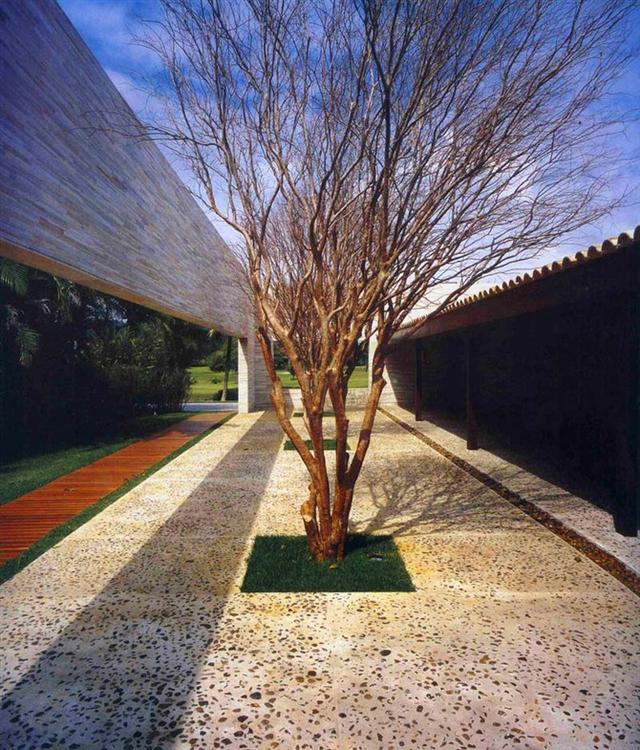
In actual garden construction, various problems are often encountered. Garden workers should be good at discovering problems, studying problems, and constantly solving problems in order to do the greening work more detailed and better.
1. After the trees are planted, how to determine the quality of the seedlings?
1. Use your hands to consciously push the tree trunk to see if the soil ball is tightly combined with the soil;
2. Check whether the planting is too deep or the soil ball is covered with too much soil to avoid water accumulation and breathing difficulties in the roots;
3. Check whether the trunk and branches have damaged skin and whether the cuts have been treated to avoid the invasion of pathogens;
4. Check whether the planting direction of seedlings is the same as the original planting direction, and whether large trees have fixed supports;
5. After planting for a period of time, check whether the leaves of the trees are curled or wilted. If curling or wilting occurs, the soil ball should be dug up in time to check the situation and check whether there is water accumulation.
2. Can trees survive if planted off-season?
The key to off-season transplanting is to replenish water and reduce transpiration to reduce water evaporation. The key to off-season transplanting is the following:
1. Choose evergreen tree species with high survival rate and easy rooting;
2. Build a shade shed after planting, wrap straw ropes or cotton cloth around the poles, spray to cool down and reduce water evaporation;
3. Replenish water in time, and carry out water infusion treatment for large trees;
4. Choose nearby seedlings for transplanting, it is best to transplant them on the same day as the seedlings are removed;
5. Prune the tree branches appropriately, try to keep the soil ball intact and reduce root damage.
3. Can large trees be transplanted with full crown and leaves?
Sometimes, in order to maintain the beauty of transplanted trees, branches are not pruned. However, if the saplings are not pruned, the transpiration effect will be very large, and the saplings are prone to dry up and die. How can we achieve full crown transplantation of saplings?
1. Cultivate container seedlings in the nursery so that the seedlings can absorb enough nutrients in the container to maintain their own growth and can be transported with full crowns;
2. For seedlings without nursery containers, try to choose autumn, cloudy and humid weather for full crown transplanting, and remove the seedlings and plant them on the same day;
3. Try to replenish the tree's moisture during the transplanting process. The evaporation of full-crown transplanted trees is large, and water replenishment is the key during transportation, planting and later maintenance management. Currently, the more advanced transplanting technology allows spraying "Senhuo Plant Transpiration Inhibitor" on the stems and leaves.
4. How to deal with tree bark and root damage?
In the process of seedling removal, transportation and planting, mechanical damage to the bark and roots is inevitable. How to deal with the damage to the bark or roots?
1. "People are afraid of being hurt, and trees are afraid of being hurt in the bark." Damage to the bark will affect the transport of water and nutrients, and also affect the exchange of substances between the xylem and phloem. Therefore, try to take protective measures during transportation, and use cork to protect the seedlings when they are hoisted or tied.
2. For the parts of the bark that are raised or not completely detached, you can first disinfect the bark and the detached part, then restore the bark to its original state, apply "Senhuo Wound Healing Cream" around it, and wrap it with hemp rope or cloth;
3. For completely peeled tree trunks, apply wound healing cream and tie them up with straw rope or hemp sheets;
4. If the roots are damaged, you can use a saw to cut off the split roots or rotten roots, and spray "Senhuo Lifa Root" on the roots.
5. What should we do if trees become weak?
In addition to diseases and insect pests, most tree weakening is caused by planting and maintenance problems. The following are the main reasons that can lead to tree weakening:
1. Trees are planted too deep, which makes it difficult for the roots to breathe and the roots are prone to waterlogging and rotting;
2. The planting direction does not match the original planting direction of the tree, that is, planting on the sunny side;
3. The soil is too sticky, the soil oxygen content is too low, and the soil is compacted.
6. How to plant street trees?
The small pits of roadside trees, poor soil quality and concrete around them can easily cause poor growth of trees. So how can we solve the problem of planting roadside trees?
1. Make 14 deep holes about 2 meters deep and 5-10 cm wide at the bottom of the tree hole, and fill them with perlite to solve the problem of poor root drainage;
2. Lay PVC pipes at the bottom of the tree pit. Because the soil of street trees is dense and low in oxygen, laying PVC pipes can keep the roots adequately oxygenated and promote root growth;
3. Fertilization treatment can be done by drilling holes with a steel chisel or by watering.
7. How to deal with the deep soil in the tree hole?
Deep soil often has poor aggregate structure and poor air permeability, so special treatment is required before planting trees.
1. Deep soil can be mixed with perlite, medium soil, grass ash, etc. to improve the soil for seedling planting;
2. The deep soil can be treated with cofferdams, and the soil aggregates will be dispersed after being exposed to wind and sun.
8. How to improve construction quality easily and simply?
1. After planting, the trees should be pruned to have clear outlines and layers, and both the forest edge and the canopy should be retracted and extended;
2. For individual trees that tilt after planting, grouting settlement or top bar straightening can be used to deal with it. Grouting settlement means digging out part of the soil in the opposite direction of the tree's tilt, grouting settlement, and then settlement treatment on the tilted surface;
3. The specifications of tree supports should be uniform, and the binding should be uniform;
4. It is recommended to crush the pruned branches with a crusher and then cover them on the soil ball at the root of the tree, which is both beautiful and can reduce ground evaporation. At the same time, pay attention to the connection between the tree mud ball and the terrain;
5. Adjust some shrubs and trim them to create a three-dimensional sense of layering;
6. Trim the shrubs and lawns carefully, and make sure the trimming lines are smooth!